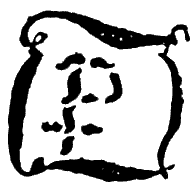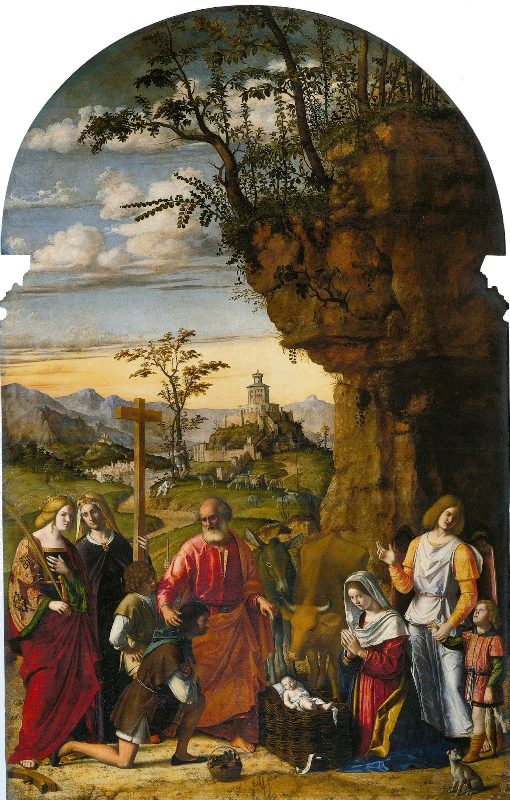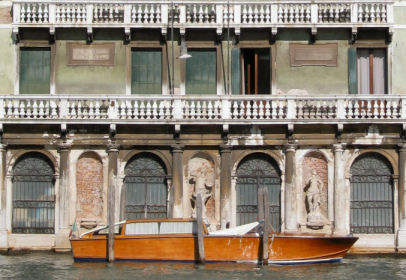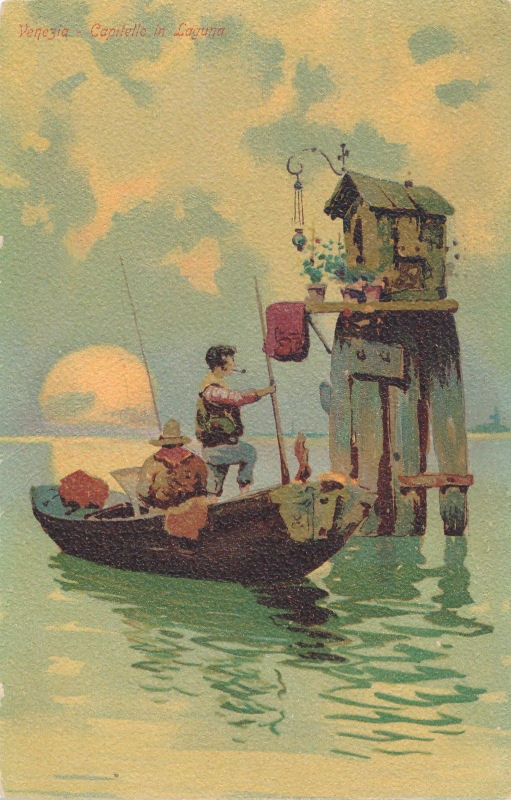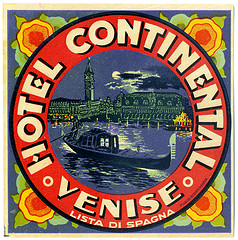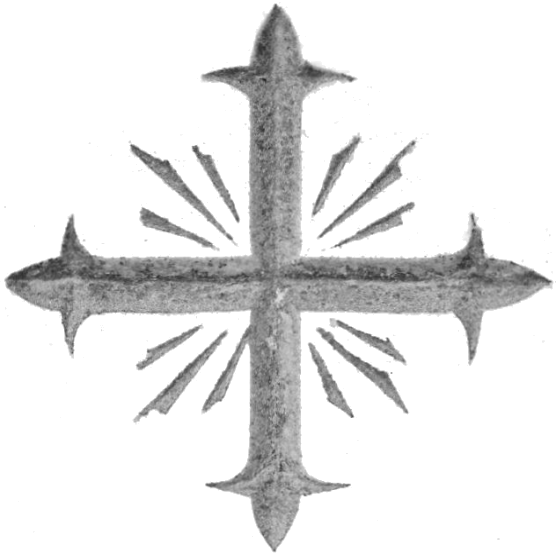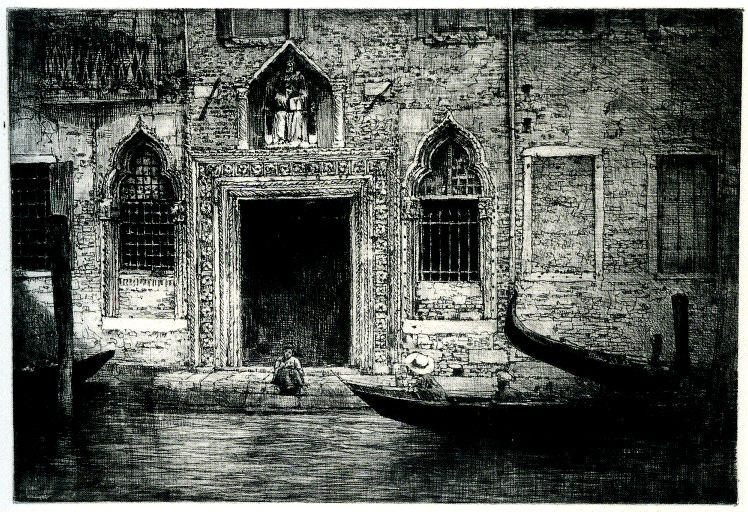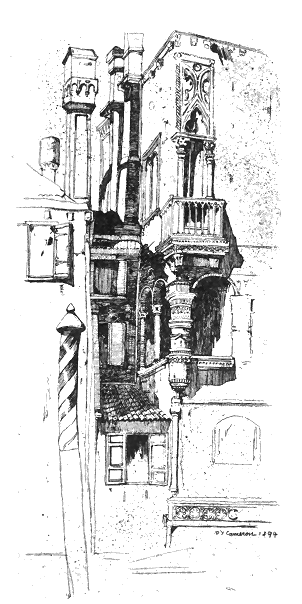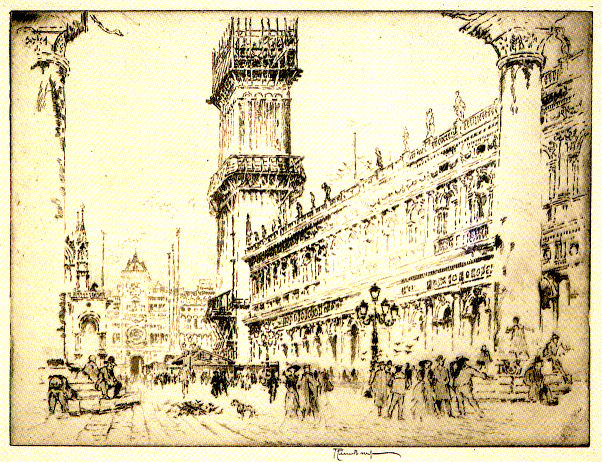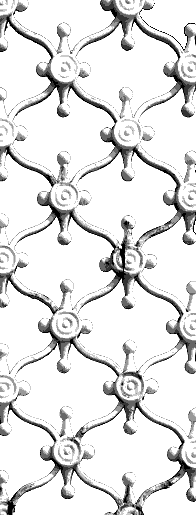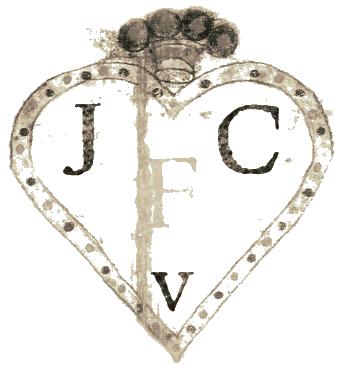|
Death in a
Strange Country 2
This
was only the second of Donna Leon's Venetian murder mysteries,
featuring Commissario Guido Brunetti, but it shows all the
elements and excellence of the later episodes, pleasing on so
many levels. There's the plot, involving a dead American found
floating face-down in a canal, loathable industrialists, and
official obstruction and corruption making the Commissario's job
much harder. We get nearer to a fuller understanding of the
hidden power of money and then the Mafia things get genuinely
scary. And then there's Ms Leon's fab way with family life, and
Guido's believable relationship with his fully-rounded wife and
kids. Policemen just don't come more straightforwardly likeable
and admirable than Guido Brunetti.
The
Death of Faith 6
The
iniquities of the Catholic church are explored and exposed, as a
visit from a nun who cared for his sick mother puts Commissario
Brunetti on the trail of many an unworthy cleric. Real people populate Donna Leon's novels and Brunetti
and his familiar family and colleagues are here forced to face up
to Italy's mother church and its many failings: priestly
proclivities, greed, and Opus Dei amongst others. She just gets
better with each one - the bizarre image of the very small man
living in a flat full of very large furniture and his collection
of very small (snuff) boxes cannot fail but lodge in your
mind.
A
Noble Radiance 7
The
discovery of bones in a field at the foot of the Dolomites starts
the Commissario poking his procedural stick into the wasps nest
that is the Venetian aristocracy. And, as he opens up an
old kidnapping case - that most anti-family of crimes - our
hero delves again into matters familial whilst plagued by his
aristocratic father-in-law's accusations regarding the state of
his own marriage. The incompetent superior and his oily
familiar are familiar figures, as is the smart and connected
secretary Signorina Elettra. Venice, too, is strongly in place,
if never quite fragrantly evoked. Then, towards the end, all
sorts of odd stuff emerges and the meaning of the title is
clarified. You can rely on Donna.
Fatal
Remedies 8
Brunetti's
wife Paola is getting increasingly angry at the reports of sex
tours taking men off to places like Thailand to have sex with
children. She decides that action is called for, and that an
implicated local travel agent needs his window breaking. After
the second such attack Brunetti can't prevent her arrest. As the
couple argue over right and wrong, and where the law stands with
regard to these concepts, Brunetti's current case takes a tragic
turn. This is what we want: sexual politics, discussion of what
makes a marriage strong, typical Italian corruption, the
typically bad postal service, and all played out against our
favourite backdrop, evoked in a low-key, but strongly. Paola is
undoubtedly a strong woman: she has her own career and does what
she thinks needs to be done, yet strangely she still finds time
to cook and wait on Brunetti hand and foot, while he lies around
and reads. Now why can't I find a woman like that?
Friends
in High Places 9
Drugs and building regulations
figure largely in this one. Brunetti's apartment is found to not
officially exist and then the bureaucrat who'd told him of this
dies suspiciously, as do some drug addicts. The whole mess is
stewed up by the presence of some loathsome loan-sharks, and the
descendants of doges, and we're set for more insights into the
unchallengeable corruption of the Italian state, set against the
backdrop of the city we love, featuring characters we care
about.
A
Sea of Troubles
10
A
fishing boat explodes and sinks out on Pallestrina and two clam
fisherman are found dead in the sunken hulk. So begins a case for
Brunetti which combines the familiar themes of corruption,
bureaucratic blind-eyes, and obstructive witnesses with
new concerns like the confusing strength of his concern for the
welfare of Signorina Elettra, the Questore's secretary, who
insists on going undercover to help. Although she uses the same
characters in each of her novels Ms Leon never exactly covers the
same ground, with the allegiances and prejudices of a small
fishing community providing the flavour here, and Brunetti is as
prone to confusion at his emotions as the rest of us. And
all rounded off with a tragic and truly gripping
climax.
Wilful
Behaviour
11
The
murder of one of Paola's students sends Brunetti chasing leads
all the way back to World War II, as long-forgotten, or long
denied, episodes in Italy's fascist past are dug up, often by
people who haven't forgotten, but who still deny. Fascinating
insights into country-wide amnesia, and the lack of any reliable
histories of the last World War in Italian, mix it up with a
fashionable foray into art-crime in another reliable gripper. And
all the stuff I usually say about the truthful and touching
family and human stuff is here as usual, if not more
so.
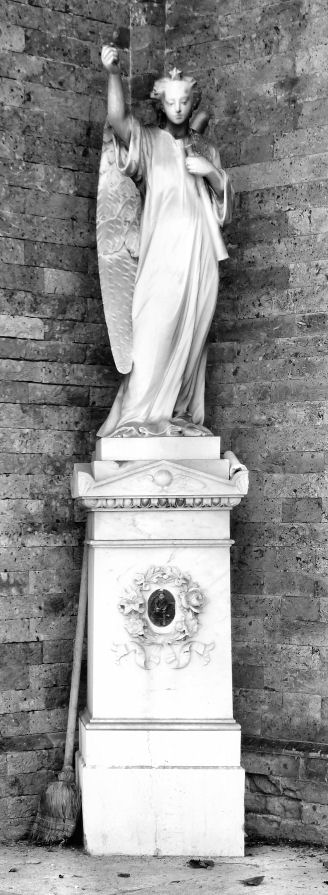
Uniform Justice
12
The
uniform being military and the justice being about as elusive as
usual. A cadet is found hanged in the showers at an elite
military academy and suicide is the easy answer. You will not be
surprised to learn that Brunetti is sceptical, and rightly so.
The boy turns out to be the son of a Venetian politician known
for his honesty - that rarest of qualities in politics generally,
let alone Italian politics - who had retired suddenly many years
previously. This retirement had coincided with his wife's getting
injured in a hunting accident, and resulted in an investigation
into military procurement shenanigans being dropped. You can see
generally where this is going, but it is the emotions and issues
stirred up in Brunetti and the other cast members that provide
the meat in the tale. Signorina Elettra is again essential, and
seems about to reveal some back-story, but remains as enigmatic
as ever. The usual blend of cynicism and humanity make Brunetti
as lovable as ever, and we continue to care and want to know
what'll happen to him next.
Doctored
Evidence
13
As
twisty as ever the story, beginning with the death of a grumpy
old woman and taking in the oppression of immigrant workers,
blackmail and a comprehensive selection of the old seven
deadlies, is at once familiar and surprising and full of very
real people. I found a couple of the plot devices a little
laboured but this is as convincing and involving as ever. And Signorina Elettra just keeps getting more and more of an
enigma.
Blood
From a Stone
14
As
the Christmas lights sparkle in bitterly cold mid-December Venice
an African seller of fake designer bags is murdered. And so
Brunetti begins an investigation that'll reveal racism, uncover
conspiracy and show us more of the Italian state's labyrinthine
levels of corruption. But Ms L. keeps the blend as fresh as ever
with Brunetti's family life reflecting the issues and that easy
style breezing you through the very present-day concerns
with wit and perception. Another good one.
An
early title for this one was Vu
Cumprà,
the faintly derogatory name for the African bag sellers, but a
bit out of keeping with the series' usual cliché-quote-based titling I suppose.
Through
a Glass Darkly
15
This
one begins during a peaceful Spring stretch for Brunetti as, for
the first hundred pages, he gets to investigate a crime that's
not been committed, only threatened, but which has worried the
daughter of the owner of a Murano glass works. Her father has
been heard to say he'd like to kill his son-in-law, her husband,
whose eco-concerns are somewhat contrary to the old man's
business ethic. So there's much discussion of the harm being done
to Venice's waters and workers, and some nice glassy stuff.
Eventually someone's found dead by a furnace
Suffer
the Little Children
16
And
this new one's even more murder-free, as our favourite
Commissario looks into a Carabinieri raid on a paediatrician
which results in concussion and a baby taken into care. He
uncovers baby-trafficking, misuse of computerised records and
some men with some very nasty views. But even with such
un-gruesome material we're still drawn in and gripped by the
effortlessly human beings Donna Leon puts our way, including old
favourites like Signorina Elettra, who gets to play an even more
crucial, and active, role this time. This all feeds into the
series' recurring theme of the family; with Venice, food,
morality and corruption all pondered too. And fig flavour ice
cream.
The Girl of
his Dreams 17
This
one starts out all low-key and domestic again, with no real crime
committed for the first third of the book. But we do eventually
get the real thing this time, with the shock of authentic death
by drowning. The non-crime bit concerns itself with organised
religion, with the topics of East European immigration and
gypsies all stirred up by political correctness and corruption as
the book progresses, making for a good topical and typical brew.
As ever it's Brunetti's way with people, his way with conflict
and politeness, his humanity and perception which provides the
meat and keeps us turning those pages. All our favourite
characters are here, and there's that comforting feeling of
catching up with the lives and gossip of acquaintances. New
developments include a map in the book showing the places where the action
takes place, and Brunetti admiring, and visiting, a fair few
churches. As my contribution and tribute to the use of clichés for the
recent titles I have to say: she makes it all look so
easy.
About
Face 18
The
Brunettis go to a dinner party at Paola's parents' palazzo. Rich
people are there, discussing rich-people stuff, but a rich man's
wife with an unearthly look, thanks to plastic surgery, surprises
and arouses Brunetti with talk of Cicero. Next day at the office
Brunetti is introduced to an initially cagey carabinieri who
needs his help, but only reveals why after three chapters of
emotional and verbal sparring. And so we're off. There's soon a
corpse, the Camorra, useful computer hacking and trips to a
casino and chemical dumps in Marghera. This one's basically about
the illegal shipping of waste, but the personal and political
webs that are woven around the plot and the people is what we
turn these pages for and we are, as ever, not disappointed. I
have to say, though, that I was more than a bit unconvinced
by a crucial aspect of the (plot-crucial) behaviour of the main
character in the non-waste-related strand of the plot, revealed
towards the end. Another one set in the snow too, as was
Edward Sklepowich's Veils
of Venice a
couple of weeks back.
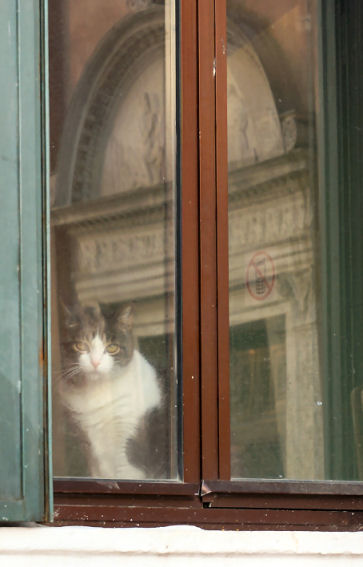
A Question of Belief
19
There's a hot summer setting this time, as Brunetti wades
through the sticky days up to his holiday poking around a couple of
unrelated and barely proven crimes. It's real life stuff of
course, with the usual concentration on personalities over
procedures. An old woman seems to be being taken in by a dubious
faith healer - not so utterly different from being duped by
the more solidly entrenched state religion, as Brunetti observes.
And there's something wrong with a number of court case
deferments that could well be profiting the defendants. No crime
is committed or detected until almost halfway in, when a body is
found as Brunetti's holiday has barely begun. The story is
littered with sadly wasted lives, dealt with with Ms Leon's
trademark combination of human warmth and practical cynicism.
And as ever you're left with the feeling of having delved into real lives.
Drawing
Conclusions 20
A young woman returns from a meet-the-parents trip that had gone
very sour to her flat, its window facing the prow of San Giacomo
dell’Orio. Going to collect her post she finds her older downstairs neighbour lying dead.
There's blood on the floor and, it turns out, fingerprint
bruises on her shoulder. The autopsy says she died of a heart
attack but Brunetti is disturbed by doubts about what might have
caused it. Not a sparklingly original setup, you might say, but
of course it's the characters, encounters and (dare I say it)
issues raised that provide the shine and substance. A couple of
spiky encounters, with a nun and the boss of a charity helping
victims of abuse, are likely to particularly stick in the mind.
Ambiguity, surprises, Signorina Elettra, authentic and
followable routes through Venice, a moving ending...all elements
in place then. Satisfaction guaranteed.
Beastly Things
21
This
year's Brunetti begins with an actual corpse - and it's a murder victim
too - which is an unusually straightforward and crime-novely opening as
far as recent Brunetti outings go. It takes a while to find out who he
is, and why anyone would want him dead. But of course there are also
some smart bits of business along the way between characters old and
new, and some plot shadowing in the form of discussions of cows. (Nice
to know that Brunetti's wife Paola shares my own very real fear of
them.) And ageing. And Brunetti has a new computer, which has been
finagled out of some obscure bit of EU budget and which he's determined
to use virtuously. So we slip warmly back into the characters' lives,
as ever, catching up with them like meeting old friends. I'll just add
that Chapter 19 does not need to be read by vegetarians, but all
non-vegetarians SHOULD read it. Also that in the final chapter Donna
Leon shows she can still surprise with something odd and moving.
The Golden Egg 22
Things begin all domestic, around the Brunetti
family dining table, then the plotting starts in a leisurely way
with Brunetti being asked by Patta to look into the Mayor's
daughter's business partner, and possible bribes to overlook
their mask shop in Campo San Barnaba displaying its wares on the
pavement. So far so low-key, even if the Mayor's children's
noses in the state-cash trough is another example of one of the
series' recurring concerns, and all the hotter topic in these
barely-post-Berlusconi times. Paola, Brunetti's wife, then phones him
in a state of agitation about the death of the disabled deaf man
who helps out in their drycleaner's. (Maybe I've been watching too
many of the TV adaptations, but it's good to get back to the
books' subtler characterisations - Patta's much less slapstick
self-obsession and incompetence, and Paola displaying strong
feelings so foreign (literally) to the actress who
plays her on the telly.) The dead man looks like a suicide, but
his mother is behaving oddly and he seems to have existed
without leaving any official traces. The action centres mostly on the
area around Campo San Polo and Campo San Stin this time - all
very much on Brunetti's doorstep. You might begin to think that
you can guess where the plot's heading but you might be wrong,
at least as far as your conception of the depths that inhumanity
can plumb goes.
|
|
By Its
Cover 23
This one opens with Brunetti investigating the theft of pages
and books from a library on the Zattere, a library whose major
donor is a friend of Brunetti's (wife's) family and who is
expected to not be best pleased at the thefts. Which all leads
the reader to expect a somewhat murder-free and family-centric
story this time. Well, the somewhat ragged start settles down
and things do become decidedly uncosy latter
on, rest assured, with the violence, and novel, centring on
Castello. The sestieri's rough authenticity, and the residents
still speaking in dialect, are well evoked. But then just as the
plot seems to be resolving to a stately conclusion the book
just suddenly ends - it really does seem as if tens of pages of
resolution have been left off the end. This could be an
elaborate joke coming at the end of a book concerned with
the removing of pages from valuable books, but I think
not. Very odd. Let's hope that this decidedly lazy-seeming
effort doesn't signal a decline in the author's enthusiasm and
quality control.
Falling in Love 24
And after the worry of quality-control slippage regarding the last one it's good
that this one grips and impresses from the off. It sees
the return to Venice of Flavia, the opera singer from Death at La Fenice,
the first Brunetti novel, and Acqua Alta. She is getting yellow roses
from a nameless admirer in quantities and with a frequency that suggests a
stalker. An attack on a young singer may be connected and Brunetti and Signorina Elettra
start to do their things to find the perp, even as the violence escalates.
Violence against women and the much much rarer phenomenon of violent women are
the underlying subjects here, with the follies and strengths of humankind and
Venice and its beauties and gossip in the foreground as ever. There are plenty
of strolls around Venice and a touching scene where Brunetti goes into San
Zanipolo to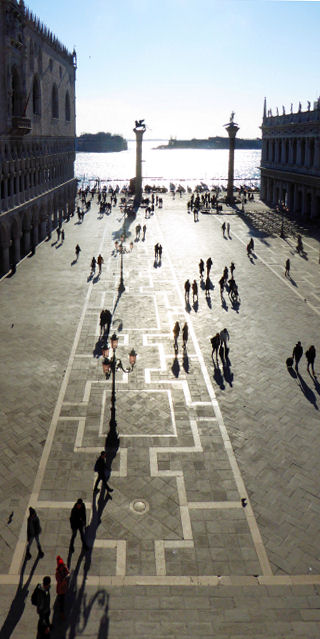 light a candle for his mother and can't suppress a shudder at the
church's poorly restored Bellini. Even the opera content isn't overdone, even for your
anti-opera-buff reviewer here, and often provides fascinating glimpses of a very
different world. Tosca, the opera being performed, echoes the plot nicely
too. I have to say that the ending is more than a little sudden, but not nearly
as jarring as last time. Leaving which aside I can but sigh contentedly. light a candle for his mother and can't suppress a shudder at the
church's poorly restored Bellini. Even the opera content isn't overdone, even for your
anti-opera-buff reviewer here, and often provides fascinating glimpses of a very
different world. Tosca, the opera being performed, echoes the plot nicely
too. I have to say that the ending is more than a little sudden, but not nearly
as jarring as last time. Leaving which aside I can but sigh contentedly.
The Waters of Eternal Youth
25
We begin with Brunetti at a dinner at his mother-in-law's, which he's
unwillingly attending as an authentic Venetian to impress some potential donors
to another Contessa's Venice in Peril-like charity. When this other Contessa
asks Brunetti to visit her it's to ask him to look into the near-drowning of her
teenage granddaughter 15 years previously. It left the girl with the mental age
of eight and the Contessa suspicious that there's more to the drunken rescuer's talk of seeing
someone push her. Scenes such as Brunetti's teasing out and observing as the Contessa
comes to the point is what we're here for, and the writing of these scenes
doesn't disappoint. It's half way through the book before an actual crime comes
to light, by which time Brunetti's fellow commissario Claudia Griffoni is firmly
established as Brunetti's sidekick on this one, as her background is suddenly
revealed and becomes useful. The action is mostly around Brunetti's home patch
of San Polo, with the near-drowning taking place in Rio San Boldo and many
meetings in Campo San Giacomo dell'Orio. We also have Brunetti regretting the
loss of the cat sanctuary in front of San Lorenzo, and detouring by the Miracoli
to boost his flagging spirits. Brunetti's boss is as malleable as ever, Signorina Elettra
remains omniscient, and his family continue to provide stability. Griffoni as
his new right-hand-person makes a change and may be a source of future
freshness. A slightly hurried ending to the case is followed by a somewhat more
considered, and pretty touching, last scene in the story of the victim.
Earthly Remains 26
Whilst interviewing a well-connected scumbag suspect Brunetti is forced to feign
a heart-attack to distract a colleague from giving said scumbag a good slapping
and thereby endangering his career. Rushed to the Ospedale Brunetti is told that
he needs a couple of weeks free of the stresses of his job. He decides that what
he needs is to escape from steaming July Venice, and benefit from the calming effect of
water and boats. It turns out that one of his wife's wealthy relatives has just
the villa on Sant'Erasmo. The first third of the book is devoted to this winding down, and
Brunetti getting his rowing mojo back. There's plenty
of boat lore and stuff about bees too, as he befriends the villa's taciturn
caretaker, a man much saddened by the deaths of his wife and bees. We also get
too much detail as to, for examples, Brunetti's packing and clothing choices and
the nuances of navigating of the lagoon, but after a body is found the
distractions fall away and Brunetti's, and the author's, gift for observation
and psychological acuity take over. After some gripping interviews we get an
ending of characteristic greyness, which you'll probably need to discuss with
someone else who's read the book.
The
Temptation of Forgiveness 27
As each passing year brings its own April and a new Brunetti novel one wonders
if a certain jadedness or predictability might set in, for the reader or the
author. But it only takes the opening scene of this one, where Brunetti, on the
vaporetto to work, encounters a mysterious bank of fog , in an episode that
borders on the mystical, and then gets to work to a summons to the office of
his vice questore, who is convincingly compared to the clot on a pot of yogurt,
to make all such worries evaporate. The plot then unfolds in a typically
leisurely way, involving drug-dealers and chemists, with the actual crime
revealed slowly, as if out of a fog, with fragrant sidelinings and the usual
greyness about the morality and justice. Along with the usual authenticity and
reality of the Venice that passes by, and of the human interactions, we have the
full compliment of the joys of the Brunettis. But then at the end we get another
one of those dangling endings that seem to be missing a chapter - the perp
confesses and then the book ends, with nary a wrap-up, or even concluding
thoughts from anyone, and the fate of the book's main victim is left unresolved.
All of which I found unsatisfying, in a novel otherwise well up to expectations.
Unto Us a Son is Given
28
Here we begin with Brunetti summoned to a
meeting with Orazio, his father-in-law. Il Conte is worried that an old friend is intent
on making his young lover his legal son and heir and wants Brunetti to
investigate. So straight away we're into typical Brunetti territory, where
there's an investigation but no crime, maybe. We seem to be looking forward to
skeletons in closets, rather than corpses in canals. Meals are eaten, sexual,
literary and
environmental matters are discussed, and behaviour and relationships sharply
observed. A brief digression involving the Vice-Questore's wife being abused by
the son of a neighbour adds a further father/son perspective, but not much else.
Locations include Florians and Campo San Pietro, with a few walks and boat trips
and some telling local-life details, of course. No surprises, lots of telling
conversations and then two deaths in the last quarter of the book, with
attendant surprise revelations, even if the main one is a little heavily
signposted. In the light of recent rushed endings to Brunetti novels this might
sound worrying, but the pacing is perfect, if unusual. The author even allows
Brunetti to stick with us for a final pondering of lessons learnt and minds
changed. The best Brunetti in a fair few years, I think.
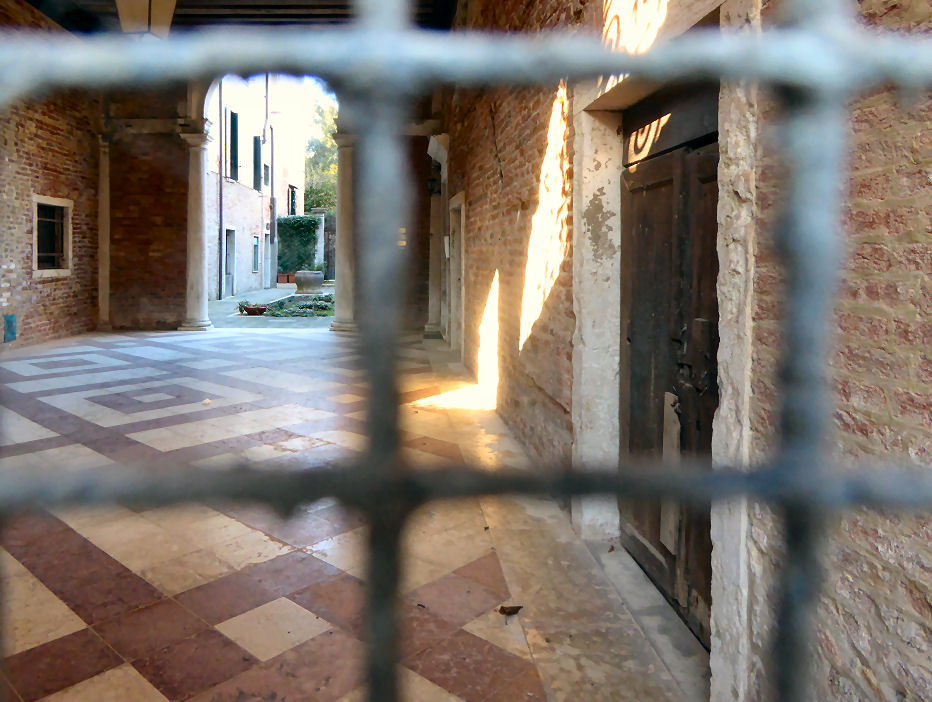
Trace Elements 29
This one's all about
water, it taking place during a sweaty summer meaning a lot of
hydration going on. And, given the title, you
won't be surprised that pollution and eco-concerns are central
this year too. Commissario Claudia Griffoni is a strong presence
too, as she and Brunetti are summoned to a dying woman's bedside
at the Ospedale Fatebenefratelli up in Cannaregio. Her husband
just died in a motorbike accident, she manages a mention of 'bad
money', acquired by her husband, Fadalto, to pay her medical
bills and so our duo are off, finding out what was bad about the
money and if the accident was an accident. Along the way they
meet colleagues of Fadalto both helpful and hateful and we learn
more than we need to, I think, about the technicalities of
testing water samples. A pair of underage roma pickpockets
provide a side plot on solid and well-trod ground, but it's not
surprises we're here for, it's the authenticity of the
interactions and observations, and the greyness of the issues
discussed and decisions taken. And Signorina Elettra. And
Venice. All the boxes are ticked, then, including the author's
recent tendency towards a certain suddenness of ending and
resistance to tying up loose ends. But (cliché alert!) that's
life.
Transient Desires 30
Two badly-beaten American women are
left on the jetty of the Ospedale Civile by two
young men from the Giudecca. The
Commissarie Guido Brunetti and Claudia Griffoni
investigate and find themselves in murky inter-departmental and
inter-regional waters. The mixture of lives and themes keeps one
guessing as to what crime, if any, is going to feature this
time. I'll not plot-spoil, but I will say that thing do indeed
get nasty. Venice and Brunetti's family life feature strongly,
of course. Locations include an unusual amount of Giudecca and
lots of Dorsoduro this time, along with the usual locales around
the Brunetti's apartment and the Questura
- we get an update on San Lorenzo losing its cat sanctuary
outside
but becoming devoted to ocean art. Boats feature strongly and I
learned lots, including the fact that big electric boats can get
as quiet as big electric cars. After reviewing 26 of these
novels I'm aware of the danger of sounding a bit like an LP
stuck in a groove, if you remember those, but I will repeat that
it's the authenticity of the humanity and interactions that we
come for, and we are not disappointed. Another sudden ending
too, but we're getting used to those as well.
Give Unto Others 31
This time we begin with Brunetti
walking through post-pandemic Venice, relishing the ability to
comfortably linger and admire his surroundings, and put away the
need to instinctively avoid his fellow pedestrians. As I type
this in February 2022 it's arguable that this novel is set in
the near future. When he arrives at the
office Brunetti has a visitor, a woman who lived
upstairs from his family when Brunetti was a boy. Boyish
emotions and the social superiority of the girl at the time make
for a certain complexity in Guido's memories and feelings. She
has come to air the suspicions she has that her daughter is
having husband trouble, and he has suggested that they are
in danger. With Commissario Griffoni's help he teases out the
mother-in-law's worries and, with the
rest of the regular gang begins to pry into various
businesses and charities that the husband, an accountant, is
involved
with. The plot progresses through a series of interviews and
conversations that are the
author's strength, in their subtleties of observation and
understanding. If there's a topographical focus this time it's
Campo Santi Giovanni e Paolo and the theme is mostly, and not
unusually, corruption and its effect on it's variety of victims,
with mental health issues stirred in too. The ending is
pleasing, a little surprising, and nicely paced. There's also a
strong cat presence this time. In short: one of the best.
So Shall You Reap 32
We commence with Brunetti weeding books out of
his four shelves of the family library. Four shelves! He may
have a small fraction of the full shelves I've got to show for
my life, but I can only sympathise and agree with the books he
chooses to weed out, admitting he'll never read them - Proust,
Moby Dick, I Promesso Sposi, D'Annunzio...yup! He then gets a
call to go free a colleague arrested at a gay pride march in
Treviso and later has to get some 'real estate' info for
his father-in-law out of an old school chum, and still the plot
hasn't actually begun. When it does, with the discovery of a
body in a canal, we soon see that the pre-plot preamble was
actually the first strands of a finely-woven plot, satisfying in
its shape and humanity. The action centres on an area of
Cannaregio around the Miracoli church, and Brunetti
contemplates, and makes, several visits to churches for
spiritual succour. An emotionally involving plot, which passes
at a perfect pace, with a convincing conclusion, make this one
an unqualified and enjoyable success.

A Refiner's Fire 33
We begin with underage gang violence in Piazza
San Marco with, eventually, the one boy remaining uncollected by
his parents needing an escort home from Commissario Griffoni
through early-hours Castello. He proves personable and, when
Griffoni confers with Brunetti later in the morning,
well-connected. Sundry events and connections ensue, some seem
relevant, some do not. Clarity comes slowly, as ever, with more
strolling through early-hours deserted Venice until a sudden
attempted murder and unconnected blackmail attempt get things
moving. It seems that the boy's father is a war hero, then it
seems not, and then very much not, to a degree that might shock
even us hardy regulars. But we don't meet him until the end, by
which time you will have been moved and shaken. Another good
one.
|
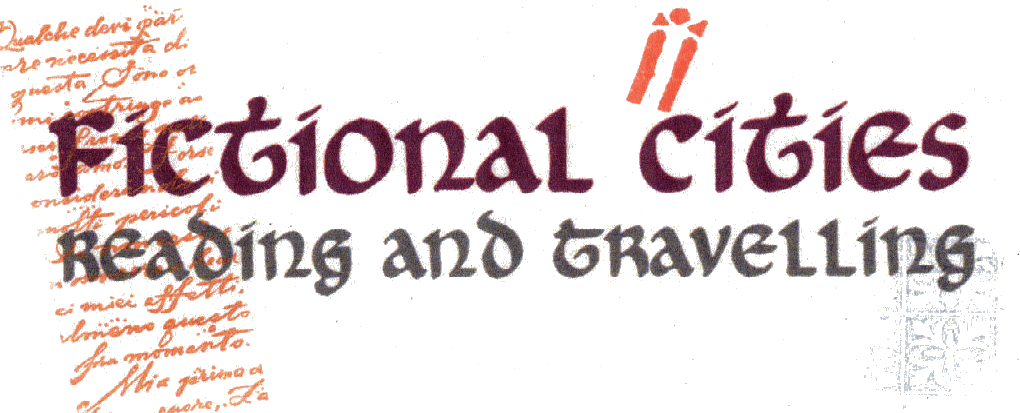



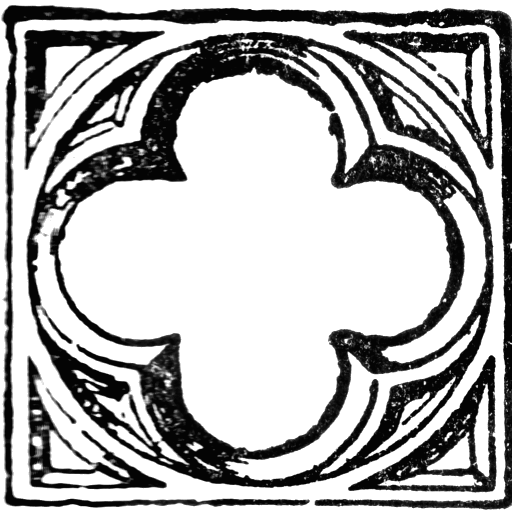


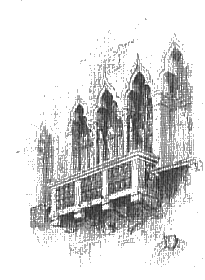
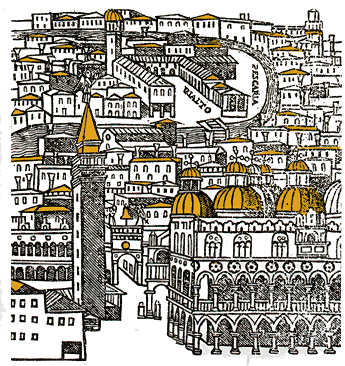



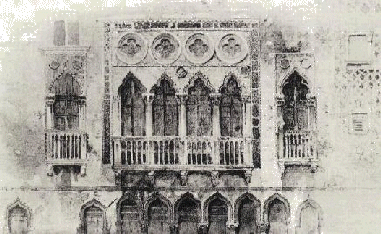
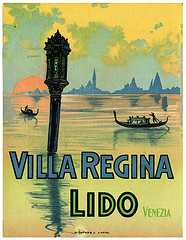
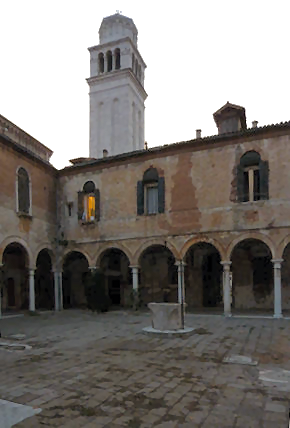
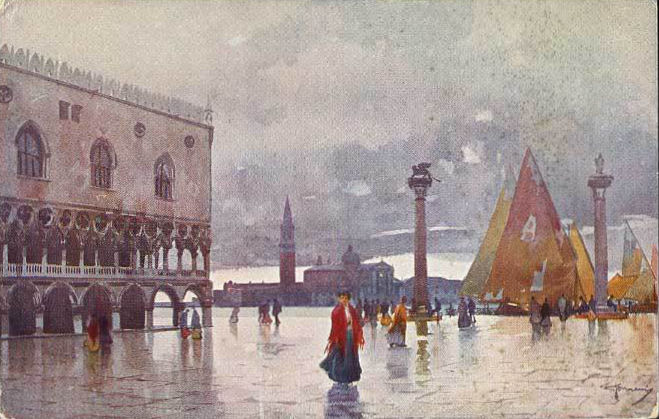
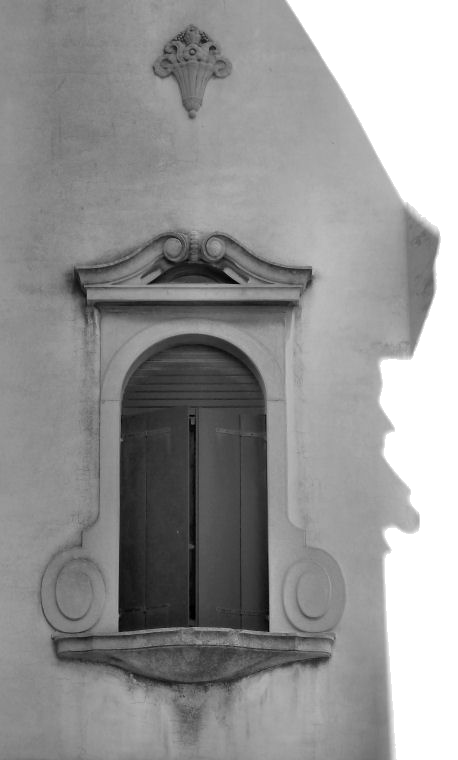
 arrogant dick, so things don't go well. There's another brother who's
sensitive, but a bit of a drip, so it falls to Orsola to flout convention
and become a maker of glass beads. Things warm up with the arrival of a new apprentice who Orsola is drawn to, well she is mesmerised by his bottom anyway. I
was not so mesmerised at first, although things do get gently involving, and the Venetian atmosphere is
well evoked, mostly Murano but the centre shines and bustles and smells too.
But, for
some reason, as the story progresses, we keep leaping forward in time a
hundred years, but the same characters are the same age, with their
memories of events in the previous chapter still fresh. This choice
approaches the concept of alternate universes, but from a safe distance.
This is not a challenging read. If you know Venetian history you'll know
what episodes to expect, as the centuries skip past. Pleasant.
arrogant dick, so things don't go well. There's another brother who's
sensitive, but a bit of a drip, so it falls to Orsola to flout convention
and become a maker of glass beads. Things warm up with the arrival of a new apprentice who Orsola is drawn to, well she is mesmerised by his bottom anyway. I
was not so mesmerised at first, although things do get gently involving, and the Venetian atmosphere is
well evoked, mostly Murano but the centre shines and bustles and smells too.
But, for
some reason, as the story progresses, we keep leaping forward in time a
hundred years, but the same characters are the same age, with their
memories of events in the previous chapter still fresh. This choice
approaches the concept of alternate universes, but from a safe distance.
This is not a challenging read. If you know Venetian history you'll know
what episodes to expect, as the centuries skip past. Pleasant. 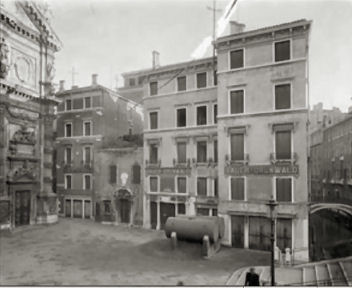
 effortlessly evocative, and include an
important scene in the
effortlessly evocative, and include an
important scene in the
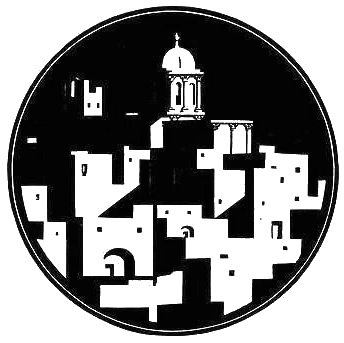



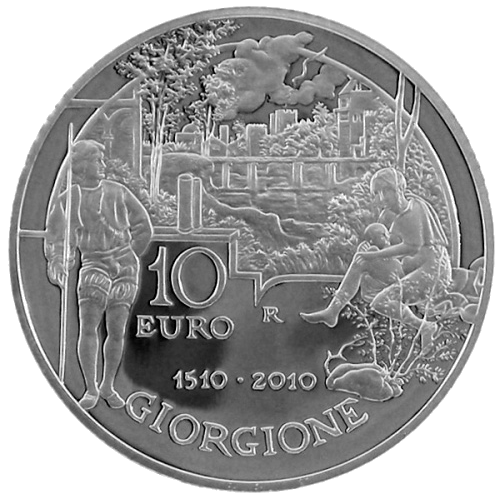 Jakob Fugger and the arms of the super-rich banker's odd and
alluring wife, Sybille, whose portrait he gets to paint. The
orbit includes every famous early-16th-century artist, in town
hoping to get the commission to paint the altarpiece of the new
Saint Peter's in Rome. Their presence is a bit convenient, but
the author knows his stuff, and the exchanges between them are
believable. Some Venetian churches get misnamed, admittedly, and
we get the rookie mistake of Leonardo being called da Vinci, but
not all the time. This novel gives the best Venice we've read in
a long time, though, and does it with a sure foot, and
descriptions nicely tinged with purple in its prose. This book
is all about colour, but to enhance a good story that progresses
with conviction and engaging twists. That Sybille is such an odd
feminist take on a film noir femme fatale adds further
colour.
Jakob Fugger and the arms of the super-rich banker's odd and
alluring wife, Sybille, whose portrait he gets to paint. The
orbit includes every famous early-16th-century artist, in town
hoping to get the commission to paint the altarpiece of the new
Saint Peter's in Rome. Their presence is a bit convenient, but
the author knows his stuff, and the exchanges between them are
believable. Some Venetian churches get misnamed, admittedly, and
we get the rookie mistake of Leonardo being called da Vinci, but
not all the time. This novel gives the best Venice we've read in
a long time, though, and does it with a sure foot, and
descriptions nicely tinged with purple in its prose. This book
is all about colour, but to enhance a good story that progresses
with conviction and engaging twists. That Sybille is such an odd
feminist take on a film noir femme fatale adds further
colour.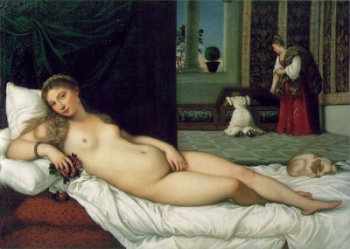
 believable. It’s like a Nick Hornby book for grownups. Then in the second half of the book
our Jeff travels to Varanasi in India and the book becomes an
extended travel article. There’s some interaction with other
people, but it smacks of the realness and ordinariness that you
get in travel books. Most of the writing is about the place, the
poverty, the people, and shit. Lot’s of shit: on the ground,
coming out of our Jeff, and hitting him in the face. The word
fragrant doesn’t begin to cover it. It’s more Bill Bryson
than Bruce Chatwin, unfortunately, and I could discern no real
connection with the first half. Maybe it’s me. It’s easy to
imagine one has missed something as the Indian section is full
of much mystical mumbo-jumbo, some of which one is maybe
supposed to take seriously. As I didn’t it's possible that
that’s why the point eluded me. ‘Serious’ novels set in a
contemporary Venice are uncommon at the moment, which means that
this one should be cherished, but not taken too seriously.
believable. It’s like a Nick Hornby book for grownups. Then in the second half of the book
our Jeff travels to Varanasi in India and the book becomes an
extended travel article. There’s some interaction with other
people, but it smacks of the realness and ordinariness that you
get in travel books. Most of the writing is about the place, the
poverty, the people, and shit. Lot’s of shit: on the ground,
coming out of our Jeff, and hitting him in the face. The word
fragrant doesn’t begin to cover it. It’s more Bill Bryson
than Bruce Chatwin, unfortunately, and I could discern no real
connection with the first half. Maybe it’s me. It’s easy to
imagine one has missed something as the Indian section is full
of much mystical mumbo-jumbo, some of which one is maybe
supposed to take seriously. As I didn’t it's possible that
that’s why the point eluded me. ‘Serious’ novels set in a
contemporary Venice are uncommon at the moment, which means that
this one should be cherished, but not taken too seriously.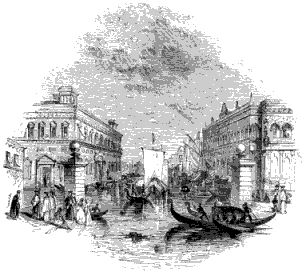
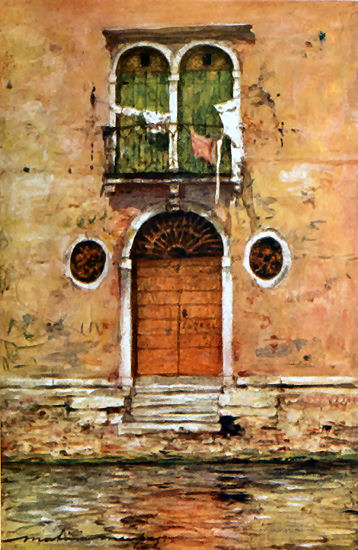
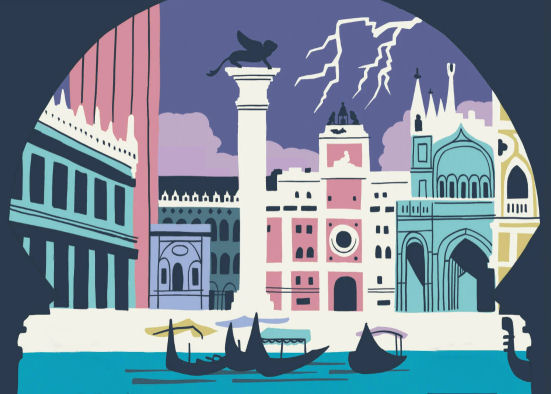

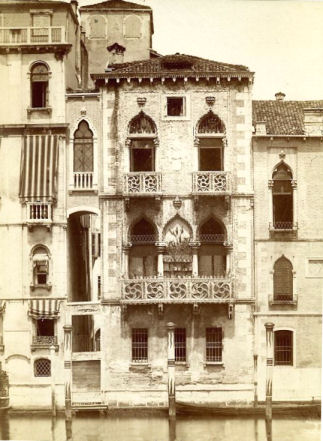

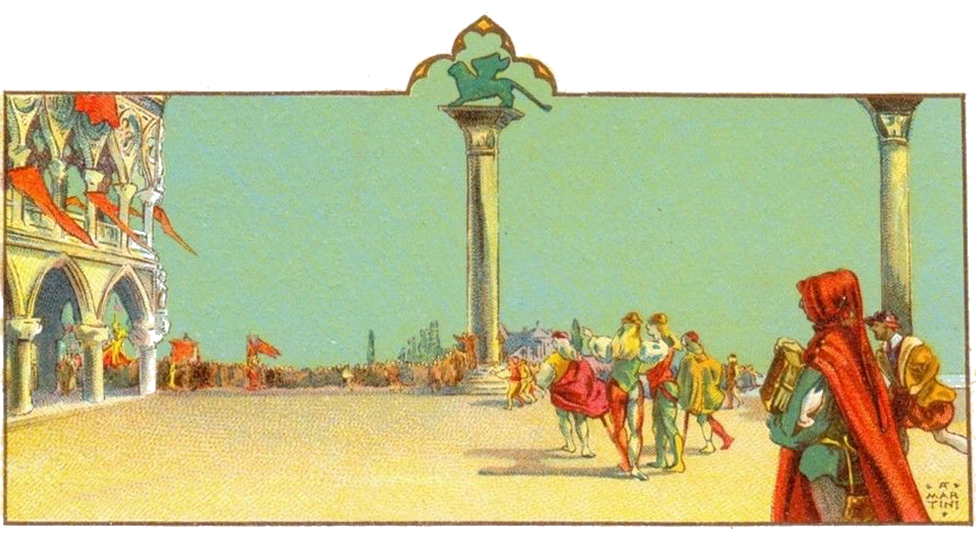
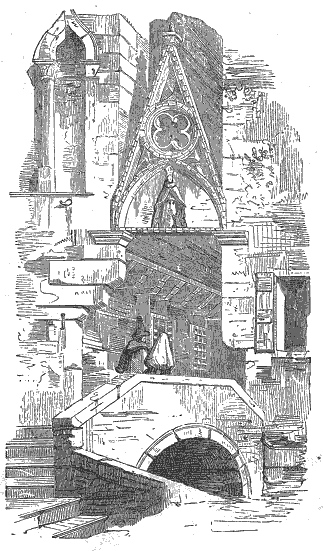
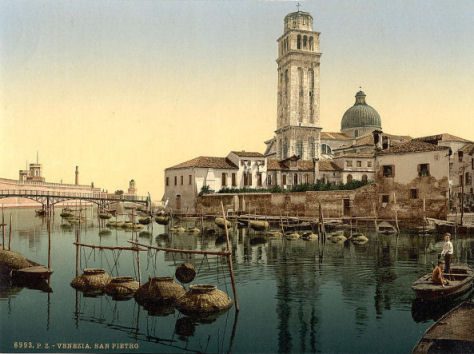
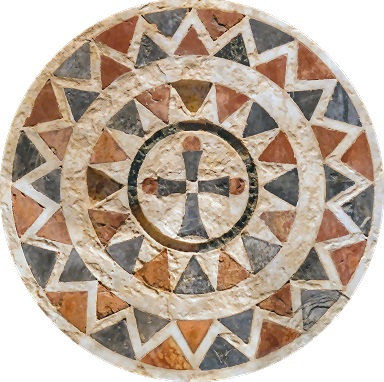
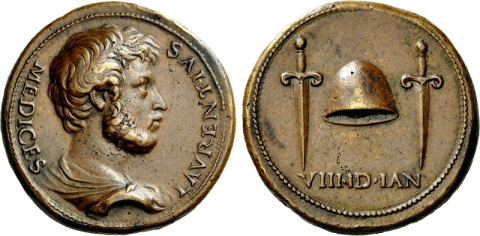
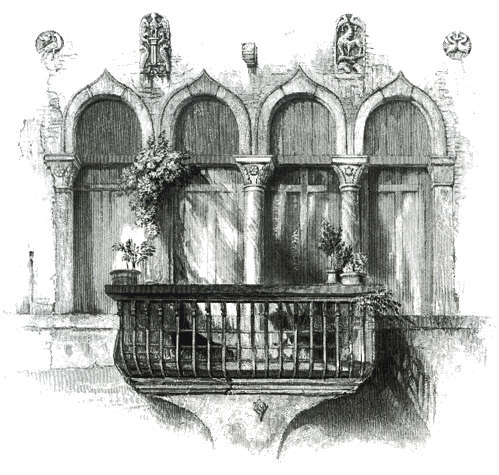


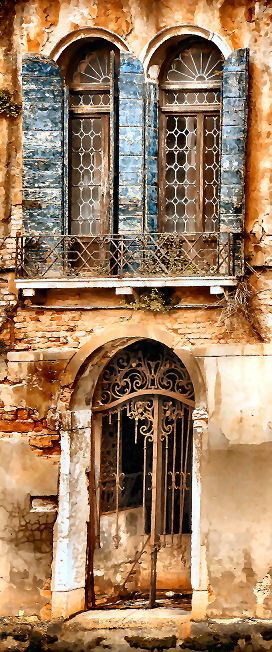
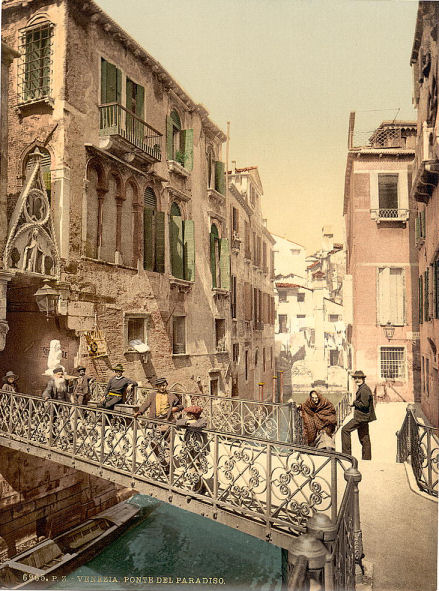


 millionaire employer and the owner of the
bookshop she was found in seems to have taken her on more than a
few boats trips. Angels feature,
confusingly at first, but resolve themselves into the soppy
Reynolds painting (see right) and on deeper into Dürer. The
investigation forms a backdrop to the living and the mopping up
and, as with the divine Donna, it's the human stuff that keeps
you reading - this time there's some very believable grieving.
Rest assured Gramsci is still a biting blighter and Fede remains
sensible. Moral ambiguity and real emotions, in characters
central and peripheral, make this a solid enhancement of an
ever-improving and effortlessly gripping series.
millionaire employer and the owner of the
bookshop she was found in seems to have taken her on more than a
few boats trips. Angels feature,
confusingly at first, but resolve themselves into the soppy
Reynolds painting (see right) and on deeper into Dürer. The
investigation forms a backdrop to the living and the mopping up
and, as with the divine Donna, it's the human stuff that keeps
you reading - this time there's some very believable grieving.
Rest assured Gramsci is still a biting blighter and Fede remains
sensible. Moral ambiguity and real emotions, in characters
central and peripheral, make this a solid enhancement of an
ever-improving and effortlessly gripping series.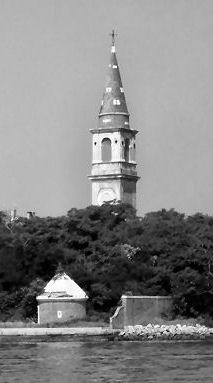

 light a candle for his mother and can't suppress a shudder at the
church's poorly restored Bellini. Even the opera content isn't overdone, even for your
anti-opera-buff reviewer here, and often provides fascinating glimpses of a very
different world. Tosca, the opera being performed, echoes the plot nicely
too. I have to say that the ending is more than a little sudden, but not nearly
as jarring as last time. Leaving which aside I can but sigh contentedly.
light a candle for his mother and can't suppress a shudder at the
church's poorly restored Bellini. Even the opera content isn't overdone, even for your
anti-opera-buff reviewer here, and often provides fascinating glimpses of a very
different world. Tosca, the opera being performed, echoes the plot nicely
too. I have to say that the ending is more than a little sudden, but not nearly
as jarring as last time. Leaving which aside I can but sigh contentedly. 

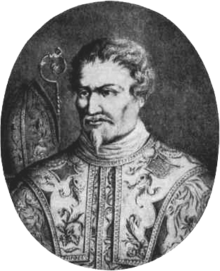 prove the legitimacy
of one of their claims, and that the contents of the boxes will amount
to, well, untold riches. So what we have here is a novel about doing
research, and for what it is it is gripping. The author allows herself
to relish her writing a bit more than when dealing with the terser
Brunetti, and there's more humour here too. The characters are still
the strength, though, and the author's grasp of human nature.
Locations-wise we're mostly in an area bounded by the Piazza San Marco,
Santa Maria Formosa and Caterina's flat in Castello, the latter being
the sestiere of choice in Venice-set novels lately. And, as with
Brunetti, Venice is appreciated and loved like a native would, but not
drooled over. The composer, Agostino Steffani, who was also an
ecclesiastic and a diplomat, is not an invention so the narrative is
constrained by reality, but with some juicy conjecture. (It should also
be noted that Cecilia Bartoli, who is one of Donna Leon's besties,
released a new CD around the time of this book's publication featuring
music by Steffani.) Having read some sniffy reviews, and not
being able to decide if these were merely the whinges of the
Brunetti-deprived, and then having been told the ending was strange, I
was perhaps predisposed to go the other way, as it were. I enjoyed this
book, although the ending is pretty peculiar, but also quite resonant,
I think, as can be said of the whole book, which I recommend if you
relish the odd and unpredictable.
prove the legitimacy
of one of their claims, and that the contents of the boxes will amount
to, well, untold riches. So what we have here is a novel about doing
research, and for what it is it is gripping. The author allows herself
to relish her writing a bit more than when dealing with the terser
Brunetti, and there's more humour here too. The characters are still
the strength, though, and the author's grasp of human nature.
Locations-wise we're mostly in an area bounded by the Piazza San Marco,
Santa Maria Formosa and Caterina's flat in Castello, the latter being
the sestiere of choice in Venice-set novels lately. And, as with
Brunetti, Venice is appreciated and loved like a native would, but not
drooled over. The composer, Agostino Steffani, who was also an
ecclesiastic and a diplomat, is not an invention so the narrative is
constrained by reality, but with some juicy conjecture. (It should also
be noted that Cecilia Bartoli, who is one of Donna Leon's besties,
released a new CD around the time of this book's publication featuring
music by Steffani.) Having read some sniffy reviews, and not
being able to decide if these were merely the whinges of the
Brunetti-deprived, and then having been told the ending was strange, I
was perhaps predisposed to go the other way, as it were. I enjoyed this
book, although the ending is pretty peculiar, but also quite resonant,
I think, as can be said of the whole book, which I recommend if you
relish the odd and unpredictable.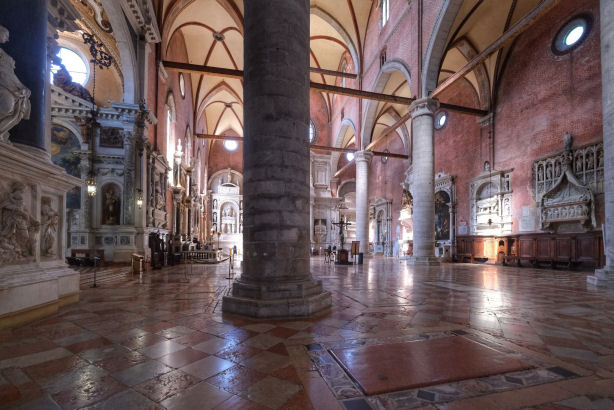
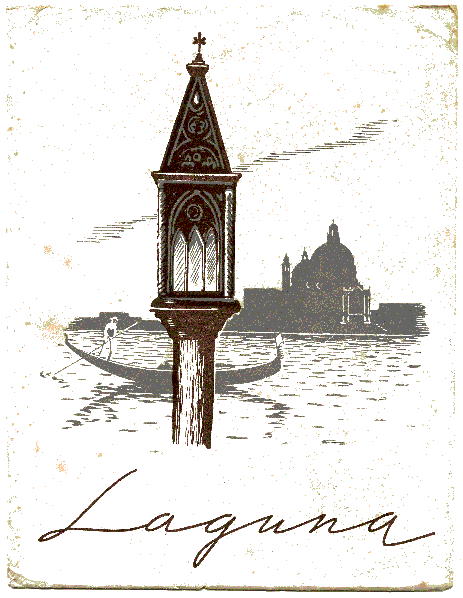
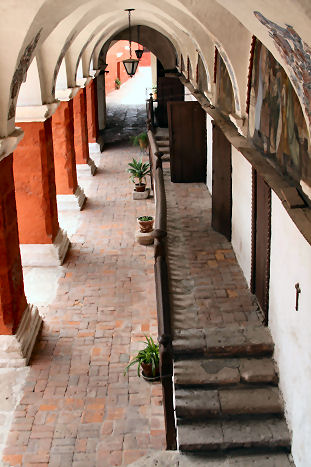 she steps out of her Venice/London comfort
zones and sets the action half in Venice and half in Peru, in the late 18th
century. The
story tells of a Venetian merchant's family, where the father's
frequent trips to Arequipa leaves behind a son whose behaviour
goes beyond evil and a daughter whose goodness is surprisingly
strong enough to cope. Things getting much worse is what the
novel is all about, so I'll not give much more away. But as the
plot develops the Santa Catalina convent in Arequipa (see photo
right, by Graham Morrison) is a considerable centre of the action - the
cloistered life being a not unusual theme in the author's works.
The story is told by the main characters, in their own voices,
and even in different fonts. Ms L's ability to well, be
these different characters borders on the spooky - this is
writing to relish and, I'd hazard, a good big notch up from her
previous work in power and range. You'll need a pretty unsqueamish
taste for visceral detail too, as
physical afflictions and infections are dealt with in
unflinching detail. The life of a person being written on their
skin is a major theme here - the clue's there in the title.
Venetian detail takes a back seat to the narrative sweep this
time, but the city is still an essential element, with no other
place possible for the plot's purposes. Fans of Michelle Lovric's previous work will revel in the
reappearance of Cecilia Cornaro, the heroine of Carnevale,
as a very central character. This novel will worm its
way into your brain, get under your skin, and if your heart
isn't faint it's in for more than a fair amount of activity
also.
she steps out of her Venice/London comfort
zones and sets the action half in Venice and half in Peru, in the late 18th
century. The
story tells of a Venetian merchant's family, where the father's
frequent trips to Arequipa leaves behind a son whose behaviour
goes beyond evil and a daughter whose goodness is surprisingly
strong enough to cope. Things getting much worse is what the
novel is all about, so I'll not give much more away. But as the
plot develops the Santa Catalina convent in Arequipa (see photo
right, by Graham Morrison) is a considerable centre of the action - the
cloistered life being a not unusual theme in the author's works.
The story is told by the main characters, in their own voices,
and even in different fonts. Ms L's ability to well, be
these different characters borders on the spooky - this is
writing to relish and, I'd hazard, a good big notch up from her
previous work in power and range. You'll need a pretty unsqueamish
taste for visceral detail too, as
physical afflictions and infections are dealt with in
unflinching detail. The life of a person being written on their
skin is a major theme here - the clue's there in the title.
Venetian detail takes a back seat to the narrative sweep this
time, but the city is still an essential element, with no other
place possible for the plot's purposes. Fans of Michelle Lovric's previous work will revel in the
reappearance of Cecilia Cornaro, the heroine of Carnevale,
as a very central character. This novel will worm its
way into your brain, get under your skin, and if your heart
isn't faint it's in for more than a fair amount of activity
also. 
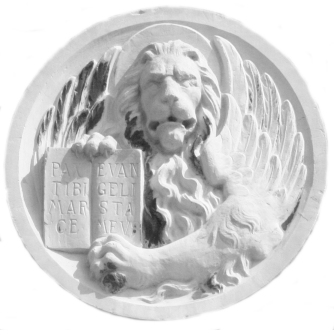



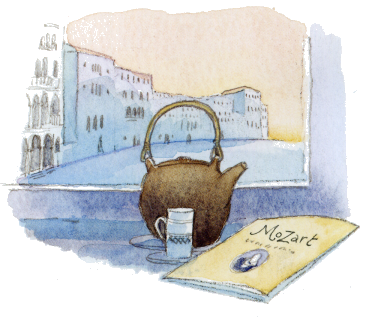
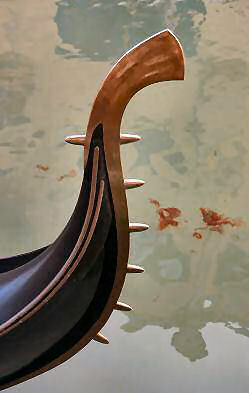 couple of intrusive accents. There's quite a bit of humour too, and it's
nicely done. I especially liked the composer humming and scribbling
and then saying exasperatedly to himself 'I've written this before!' Very
well worth watching.
couple of intrusive accents. There's quite a bit of humour too, and it's
nicely done. I especially liked the composer humming and scribbling
and then saying exasperatedly to himself 'I've written this before!' Very
well worth watching.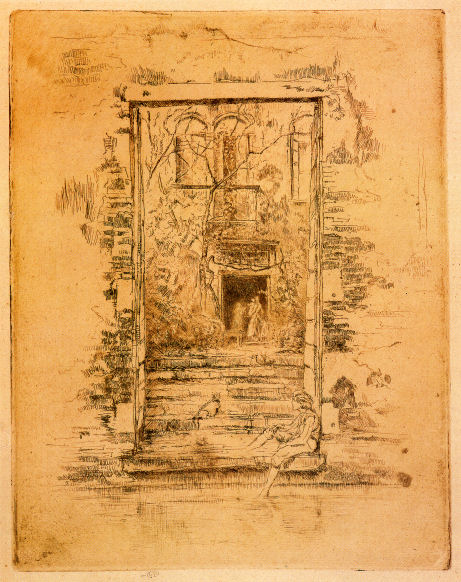 members of
the Partibon for facts about their uncle, a man whose name only
has to be mentioned for faces to blush, conversations to stop,
and anger to be expressed. I'll admit to a crisis of commitment
about 100 pages into this long
book, but persevering rewarded me and I became as keen as the
characters to find out just what the hated cupboard skeleton
did. A later move to Berlin provides a nearer and grimmer
perspective on historical developments. P.M. Pasinetti was born in Venice and died there in 2006. He
split his life between Venice and teaching in US universities and
was also involved in various film projects, being distantly
related to Antonioni and his brother being a famous Italian film
director who gave his name to one of the prizes at the Venice
Film Festival. His other Venice-set novel is called From
the Academy Bridge and
was published in 1968.
members of
the Partibon for facts about their uncle, a man whose name only
has to be mentioned for faces to blush, conversations to stop,
and anger to be expressed. I'll admit to a crisis of commitment
about 100 pages into this long
book, but persevering rewarded me and I became as keen as the
characters to find out just what the hated cupboard skeleton
did. A later move to Berlin provides a nearer and grimmer
perspective on historical developments. P.M. Pasinetti was born in Venice and died there in 2006. He
split his life between Venice and teaching in US universities and
was also involved in various film projects, being distantly
related to Antonioni and his brother being a famous Italian film
director who gave his name to one of the prizes at the Venice
Film Festival. His other Venice-set novel is called From
the Academy Bridge and
was published in 1968.

 rise and fade. The feeling of the progression and messiness and strange
interweaving of lives passing is feelingly evoked and there's much
comedy. I've read it through twice now, and I'm a very rare re-reader.
Temporary Kings reflects
the later volumes' concern with the literary life and the dangerous
Pamela Flitton - a compellingly unlovable piece of work who manages to
have destructive sexual encounters with almost every male
character. It starts in Venice with Nicholas attending a conference on
the island of San Giorgio Maggiore, with action amongst Veronese
frescos on the mainland and under an invented Tiepolo ceiling painting,
with a little discussion of both painters. There's also much
catching-up with what's happened since the previous volume, confirming
my doubt that reading just this book would not be a good idea. There's
more art and Americans than usual in the Venice half of this one. And
the Americans remain for the second half, when the action returns to
London and politics.
rise and fade. The feeling of the progression and messiness and strange
interweaving of lives passing is feelingly evoked and there's much
comedy. I've read it through twice now, and I'm a very rare re-reader.
Temporary Kings reflects
the later volumes' concern with the literary life and the dangerous
Pamela Flitton - a compellingly unlovable piece of work who manages to
have destructive sexual encounters with almost every male
character. It starts in Venice with Nicholas attending a conference on
the island of San Giorgio Maggiore, with action amongst Veronese
frescos on the mainland and under an invented Tiepolo ceiling painting,
with a little discussion of both painters. There's also much
catching-up with what's happened since the previous volume, confirming
my doubt that reading just this book would not be a good idea. There's
more art and Americans than usual in the Venice half of this one. And
the Americans remain for the second half, when the action returns to
London and politics.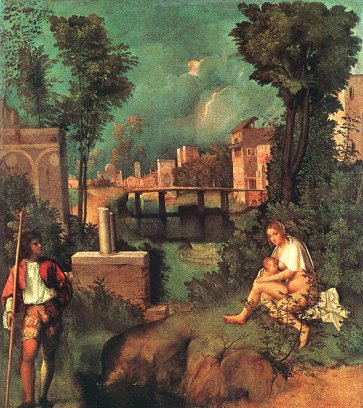
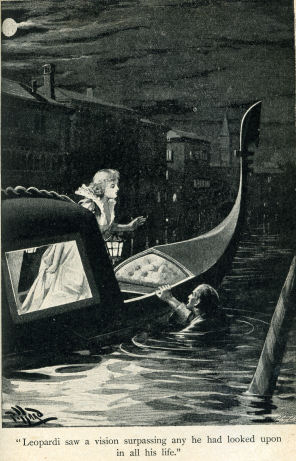 below. Another is on
the
below. Another is on
the
